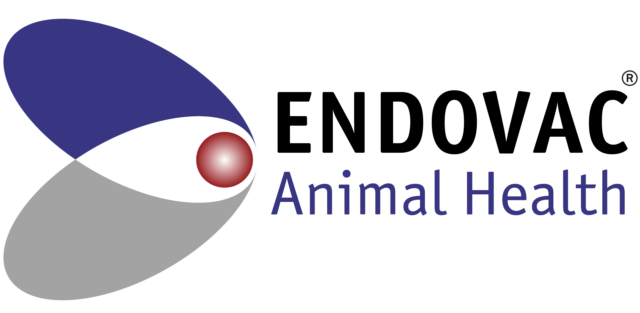There are more than 120,000 species of flies in the world. Of those, there are four species that most commonly affect cattle.
Stable flies and house flies most commonly affect confined cattle, especially housed dairy cattle, impacting cow comfort, health and productivity. Horn flies and face flies more commonly disturb pastured cattle, which affects dairy producers who graze their herds throughout the summer months.
Each species is different in how they live, feed and reproduce. That is why understanding the habits and lifecycles of a specific fly, and identifying which flies can impact your operation, is the crucial first step for effectively controlling fly populations on your operation.

Stable flies
Stable flies tend to bite cattle on the lower parts of the forelegs and under the belly, making them easily identifiable by their position on the animal. When feeding, they will always assume an upward position on the animal, and while resting, they will resemble an airplane that is ready to take flight. Stable flies will feed for two to five minutes then retreat to shady resting areas, returning for blood meals several times per day during warm conditions.
A stable fly bite is painful, causing cattle to react by stomping and bunching. In turn, cows will not lay down enough, rest comfortably or ruminate properly. This leads to lameness, decreased feed efficiency, reduced milk production and increased potential for heat stress due to bunching behavior. Breeding areas for stable flies are wet, decaying organic material such as old silage, spent hay or decaying straw mixed with manure and soil. Average U.S. dairy losses due to stable flies are estimated at $360 million per year and have a total impact on the U.S. cattle industries of $2.2 million per year.
House flies
House flies – a type of filth fly – live, feed and breed in filthy places, such as manure piles, decaying silage, spilled feed, bedding and other decaying organic matter. They have spongy mouth parts, so they do not bite, but they are mechanical vectors of multiple disease-causing pathogens. They do this by leaving disease-contaminated vomit or feces on animals, feed, premises and equipment. House flies are not only bothersome for confined cattle but are also an underestimated nuisance to farm workers.
Horn flies
Horn flies are one of the most economically important pests of cattle, especially for pastured cattle. They are half the size of other significant fly species and spend most of their life on the backline, shoulders, head and neck of cattle. Horn flies will always assume a downward position on the animal, taking 20-30 blood meals a day. They irritate and annoy cattle, causing them to bunch up, which results in interrupted grazing, resting and rumination time, thus impacting productivity. The economic threshold for horn flies is at just 200 per animal, at which point cost of prevention is less than production losses. Horn flies have also been implicated in the spread of Staphylococcus aureus, a bacteria that cause summer mastitis in dairy cattle. They breed in fresh, undisturbed manure with populations peaking in the spring and again in late summer into fall. They may plateau midsummer if weather conditions are hot and dry, but they often spike as moist conditions return.
Face flies
Face flies are most drawn to the animal’s face, as they feed on cattle saliva, tears and mucus. They can also be found landing on resting areas such as fence posts, trees, bushes and other objects. Although they do not bite the animal or take blood meals, the feeding behavior of the fly can make cattle nervous and force them to avoid grazing or not rest enough. Like horn flies, face flies also breed in fresh, undisturbed manure. Not only are face flies responsible for spreading the bacteria that causes pinkeye, they can also contribute to the corneal damage necessary for those bacteria to take hold.
A proactive approach
Once you have identified which species you are dealing with and which are likely to have the greatest impact on your operation, it is important to understand proper fly control methods to protect your animals and your bottom line.
Fly control for dairy cattle works best when approached proactively. Below are mitigation strategies to consider when dealing with stable flies and house flies, the two species that most commonly impact confined cattle.
- Sanitation management. Fly control starts with sanitation and is the most crucial step in your overall fly management plan. Stable flies and house flies thrive in damp, filthy environments. Reducing moisture in barns and frequently removing manure and spoiled feed can help reduce potential breeding grounds and ultimately, lessen adult fly populations. Additionally, scraping pens frequently can decrease the breeding areas available for flies to reproduce. Pay particular attention to these often overlooked areas: under water troughs and fence lines, feed buildup in cattle guard pits, and spilled feed or silage.
- Identify the breeding grounds and treat with a residual larvicide. Once you first observe adult flies on an animal, you must identify and treat the breeding grounds with a residual larvicide. Both stable flies and house flies lay their eggs in wet, decaying organic material, so applying a larvicide treatment to the breeding areas can kill larvae and reduce adult populations. Continuing a larvicide treatment throughout the fly season can significantly reduce adult populations.
- Use residual adulticides. If adult fly populations continue to increase, residual adulticides such as spray and pellet baits can help reduce and control populations. Baits are designed to attract flies. When a fly consumes a pelleted bait or lands on a surface treated with a spray bait, it will die.
- On-animal treatments. When you notice signs of “fly worry,” meaning stomping, tail switching, body licking or head flinging, on-animal treatments are encouraged. Sprays can be applied to the legs and along the backline.
- Use space sprays. If you start to see a rapid increase in adult flies anytime throughout the season, space sprays, foggers and misters can be used in the air to control flying pests. This control tactic immediately knocks down the adult fly population. Space sprays are easy to use.
Resistance management
Larvicides used in conjunction with adulticides will act on multiple lifecycle stages and provide a more successful fly management result. Rotating chemical classes and modes of action can help avoid fly resistance to insecticides. Reading and following label instructions and applying products at the right time, in the right way, for the right parasite will further add to product effectiveness and overall success of your fly management plan.
Flies cost dairy cattle producers across the world billions each year. Planning and proactively taking control of flies before they control your herd can put you pounds of milk and dollars ahead this fall.
References omitted but are available upon request by sending an email to the editor.




